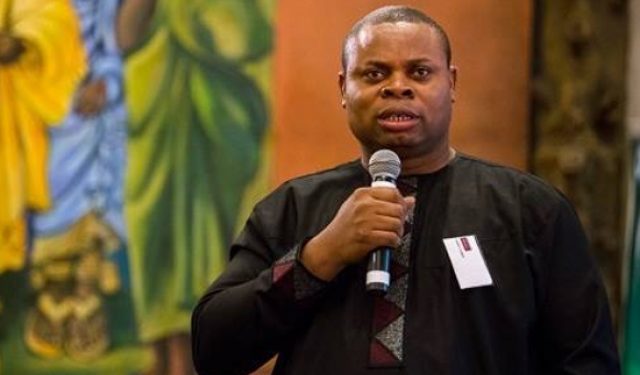President of IMANI Africa, Franklin Cudjoe, says many Ghanaians are financially stressed due to the unemployment crisis in the country.
According to him, even Ghanaians who have jobs are struggling to make ends meet.
The latest Ghana Statistical Service (GSS) labour statistics report for the 2023 third quarter revealed that more than 1.8 million Ghanaians are unemployed.
This number indicated a 14.7% unemployment rate in the third quarter of the year, the report stated.

Speaking on The Probe with Benjamin Akakpo, Mr. Cudjoe described the situation as disastrous.
"There was a study I think somewhere close to last year, that suggested that two-thirds of Ghanaians are financially stressed. Which means that even for those of us, those people who are supposedly employed, they do not see the end of the month with their earnings," the IMANI boss explained.
He sees the predicament as one that poses a security threat and needs to be addressed immediately.
"That's a recipe for disaster. I mean it's like a ticking time bomb. We are sitting, but it's one of the most serious national security issues I suspect, as we speak right now, so those numbers are stark. And it appears the numbers are increasing, and the solutions are not necessarily that coherent right now from the political parties."
This staggering figure revealed by the GSS represents an increment of about 74,734 more persons entering the unemployed pool from the second quarter.
Details of the report showed an expansion in the labour force which saw about 440,000 more persons joining the market between 2023 Q1 and 2023 Q3.

However, more than 60% of these new entrants were employed during the period leaving the rest in the unemployed bracket. This accounts partly for the increment in the number of unemployed persons in the quarter.
By sex, the report indicated a widening gap between males and females with women having an unemployment rate almost twice that of men.
This indicates the growing need for female empowerment in order to achieve SDG goal five which translates into achieving gender equality and empowering all women and girls by 2030.

Meanwhile, it is interesting to note that females have been consistently more than males in terms of employed persons with differences averaging about 600,000 and 900,000 for 2022 and 2023 respectively.
This is reflective of the fact that there are more females in the labour force as compared to males.

The regional breakdown of the unemployment rates shows high rates in the Southern and Western parts of Ghana. The Greater Accra led with 25.7% followed by the Western and Ashanti Regions with 16.80% and 16.4% respectively.

The Greater Accra and Ashanti regions were the only regions with consistent unemployment rates above the national rate in the past seven quarters.
Latest Stories
-
I am not ready to sign any artiste to my record label – Kuami Eugene
13 mins -
Gov’t spokesperson on governance & security calls for probe into ballot paper errors
16 mins -
Free dialysis treatment to be available in 40 facilities from December 1 – NHIA CEO
30 mins -
NHIA will need GHC57 million annually to fund free dialysis treatment – NHIA CEO
36 mins -
MELPWU signs first-ever Collective Agreement with government
1 hour -
I’ve not been evicted from my home – Tema Central MP refutes ‘unfounded’ reports
1 hour -
After Free SHS, what next? – Alan quizzes and pledges review to empower graduates
2 hours -
Wontumi FM’s Oheneba Asiedu granted bail
2 hours -
Alan promises to amend the Constitution to limit presidential powers
2 hours -
Ghana to face liquidity pressures in 2025, 2026 despite restructuring most of its debt – Fitch
2 hours -
NPP’s record of delivering on promises is unmatched – Bawumia
2 hours -
Mahama: It’s time to dismiss the incompetent NPP government
2 hours -
‘It’s extremely embarrassing’ – Ernest Thompson on Ghana’s AFCON failure
2 hours -
Today’s front pages: Monday, November 25, 2024
2 hours -
T-bill auction: Government misses target again; interest rates continue to rise
2 hours

